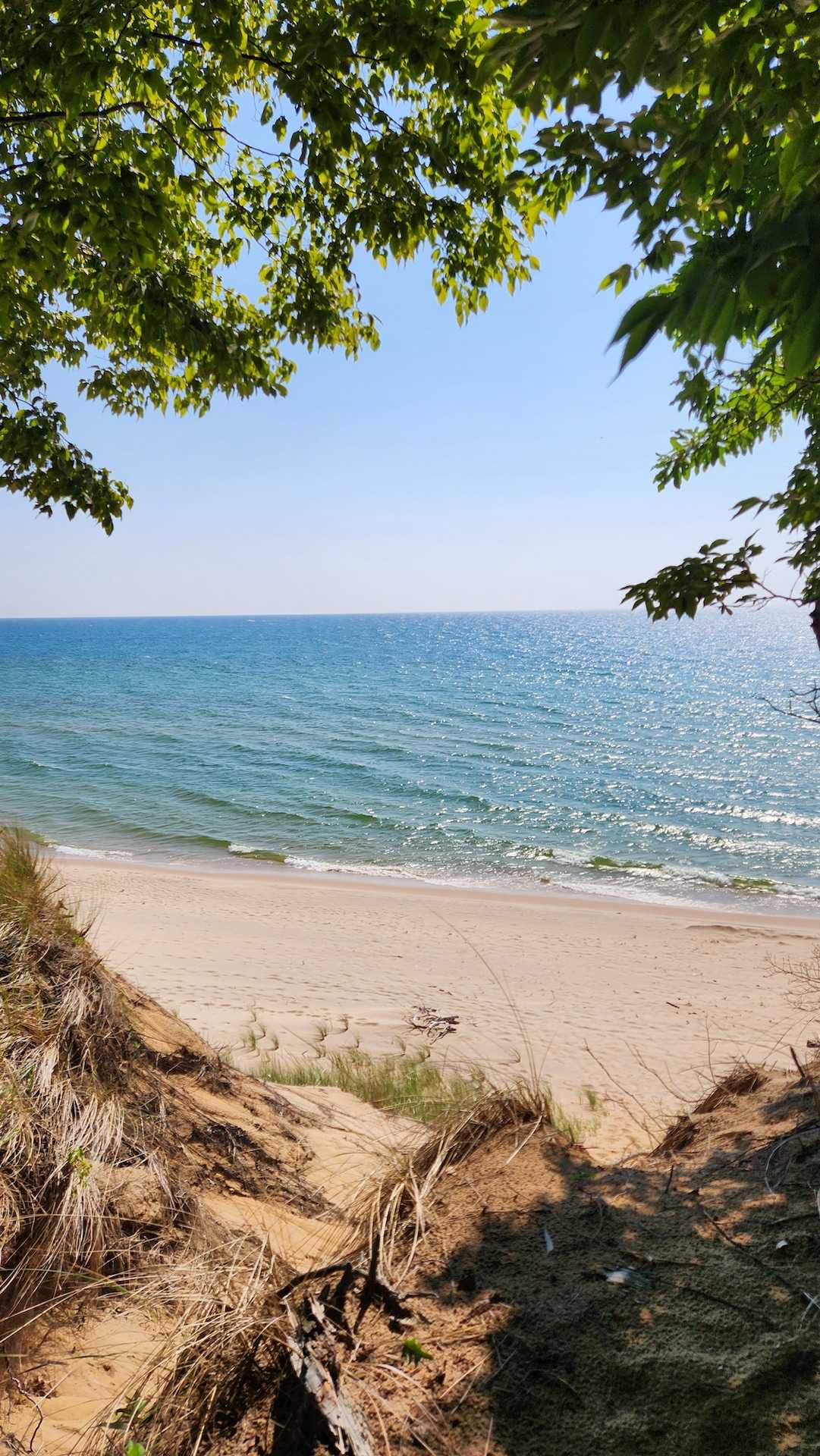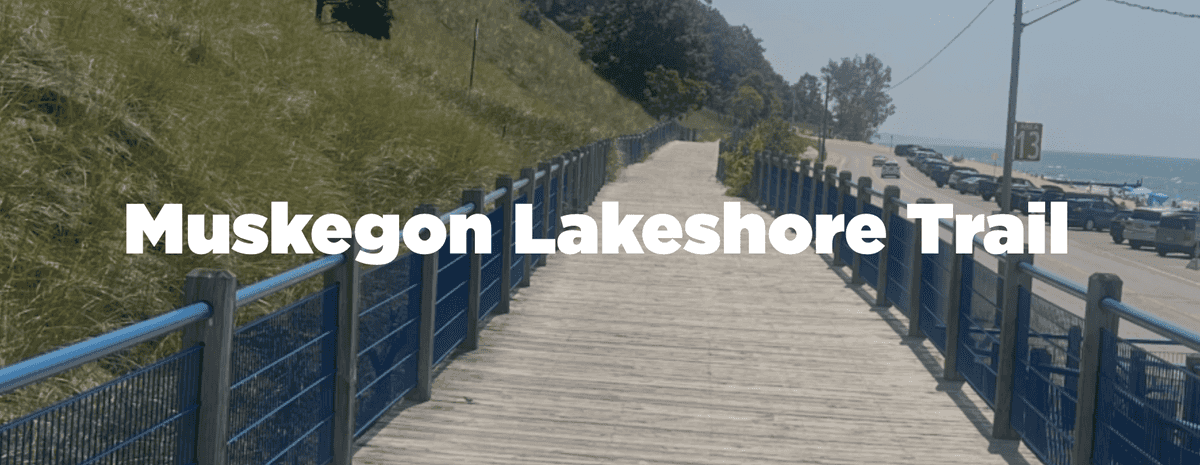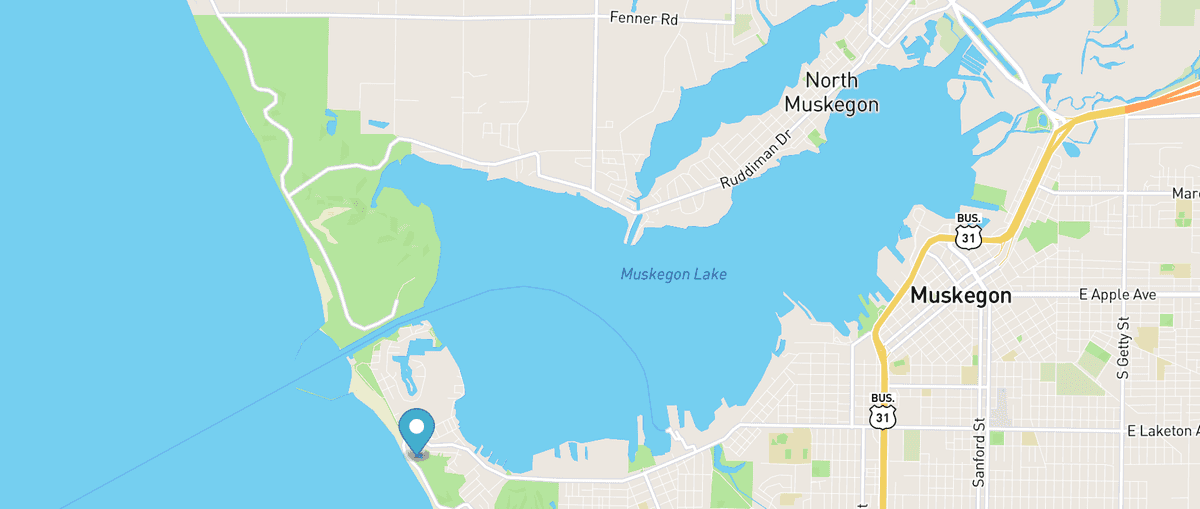Beyond the Bike Path: Unearthing Muskegon's Industrial Ghosts and Green Rebirth
The paved surface of the Muskegon Bike Trail offers a smooth, scenic journey along the waterfront from Muskegon Lake near Adelaide Point and Heritage Landing a block from our rental house Silversides House in the NIMS Neighborhood right across the street from the old furniture factory. Like every historic building on this formerly industrial waterfront--now being rebuilt into breweries and condos overlooking the now sparkling lake with a view of Lake Michigan dunes across the water--the real story lies just beneath the surface. Muskegon's history is a narrative of industrial titans, profound environmental cost, and a cleanup effort that is reshaping the very definition of Muskegon. It's a similar story to Detroit, which is also in process of being rebuilt after years of decline. While the new bike trail running past all this decay and renewal provides beautiful views of reclaimed nature, it also serves as a guide through a landscape of remarkable transformation, particularly in the historic NIMS neighborhood.
The NIMS Neighborhood: From Factory Shadows to Front Porches
The trail's starting point near downtown plunges you directly into the heart of this revival that has been so widespread the last 5 years it has made regional and national news. The NIMS neighborhood, named for Frederick A. Nims, a prominent 19th-century lawyer and railroad developer who was instrumental in the city's growth, was for generations a community living in the shadow of heavy industry. Its modest bungalows and Foursquares were home to the workers who fueled Muskegon's economic engine. Rail lines run right through the neighborhoods and under the old abandoned furniture factory that stands between our house and the lakefront. Half of the factory has been converted to condos, and a much nicer completion of this project is to come next year in 2026, in addition to the new Adelaide Point luxury condos and marina on the lakefront down the hill, with a new skatepark to be built in between. It's exciting times for this neighborhood, which was still so quiet when we purchased a new construction house on an old abandoned lot here that you could hear the trees creak in the wind under seagulls' nearby cries on the beach.
Today, NIMS is a dynamic blend of old and new. The most prominent landmark is the colossal former Shaw-Walker furniture factory directly across Washington Avenue from Silversides House. Founded in 1899, Shaw-Walker became an icon of American office furniture, famous for its "Built Like a Skyscraper" steel filing cabinets. For decades, this massive complex on Division Street and Lakeshore Drive was a hub of manufacturing, its presence defining the neighborhood. After ceasing operations, the building stood for years as a symbol of industrial decline. Now, it is in the midst of a dramatic redevelopment into The Watermark Center, a mixed-use space with apartments and condos, a rooftop pool overlooking Muskegon Lake, and an already operating coffee shop and bookstore in the ground floor. All of this preserving the historic industrial architecture while breathing new life into the area, which is a mix of small residential bunagalows and old churches and storefronts. This project is a cornerstone of the neighborhood's revitalization, turning a former industrial giant into a residential anchor, which is expected to bring more investment up the coast from Lakeside in West Muskegon all the way to the downtown streets, where a public-access beach is now being planned for more equitable access to the shoreline.
How Much Sawdust They Pulled Out of That Lake?
The cleanup of Muskegon Lake has been far more intricate than simply removing contaminated sediment from this lake, which a few years ago no one would have been swimming in as it was surrounded by industrial shipping. It's a story of ecological restoration, piece by piece:
Decades before the foundries, Muskegon was the "Lumber Queen of the World." Mills lined the lake processing local timber so thick the lumberjacks had to crawl their way through the old-growth forests settling here. Over time, an enormous amount of sawdust, wood slabs, and logs collectively known as "mill debris" or slagwood sank to the bottom, smothering the natural habitat. (Muskegon is Anishnaabe/Ojibwe for "swampy river mouth" so you can imagine what was here before--a million acres of wetlands and now endangered coastal dune habitat). A massive effort has removed over 110,000 tons of this woody debris from the lakebed, restoring critical bottom-dwelling and fish spawning habitats.
Softening the Shoreline
Much of the lake's edge was hardened with concrete walls, iron slag, and other industrial fill to maximize land for factories around the bay. Restoration projects have focused on "softening" these shorelines, removing artificial barriers and re-establishing natural, sloping banks with native vegetation. This not only improves habitat for fish, birds, and turtles but also increases the shoreline's resilience to erosion. The developers at Adelaide Point have faced a frustrating but justified amount of criticism and oversight while dredging to rebuild the Adelaide Point marina that juts out into Muskegon Lake. The good news is people here now believe this lake can be cleaned up, that the lakes can offer safe water for people to drink and play in, and that maybe it isn't entirely a bad thing that so many younger people are now moving back to this city. Because they seem to mostly be people who care about the future of this place, just like the locals.
Habitat Reconstruction
At sites like the former Amoco oil terminal, cleanup involved removing concrete walls, contaminated soil, and even old tires dumped in the creek. Following the removal, crews have reconnected wetlands to the lake, planted thousands of native aquatic plants, and installed habitat structures like submerged logs to create new homes for fish and wildlife. The city has also put in tremendous effort to filter the water to remove PFAS and other industrial contaminants that were found during local waterway cleanup. Once again this made the national news: parents who had themselves grown up creekwalking in NIMS and nearby Muskegon neighborhoods were discovering they and their kids had been poisoned by local water pollutants. Things are better now, and continue to improve. Just in time, or long overdue, depending on how you look at it. This place is far too beautiful naturally to sink into a polluted swamp.
From Industrial Wasteland to Waterfront Jewel: Adelaide Pointe and Heritage Landing
Two of the most dramatic examples of this transformation lie directly on the bike trail out our front door at Silversides House.
Adelaide Pointe, the prominent peninsula visible from the trail, has a layered industrial past. It began as a lumber mill site in the 1870s. Later, it became home to the Westran Foundry, a major steel producer for the World War II effort. Bullets used in World War II were made here, as was an astronomical amount of office furniture after the war.
The very land of the northern peninsula was created by decades of dumping expended foundry sand directly into Muskegon Lake. You can see from any map it isn't a natural feature sticking out like it does into the lake. After the foundry closed in the 2000s, the site was a contaminated brownfield. Today, it is undergoing a stunning redevelopment into a luxury waterfront community with a marina, condos, an annual boat show, and restaurants, a prime example of "eco-gentrification" made possible by the public investment in the lake's cleanup. Not everyone (okay, no one but the developers) is happy with the price of these condos potentially pushing out third-generation natives of this once Polish and Hispanic neighborhood, but anyone can agree the only way to go recently was up: the entire factory sits in an abandoned lot next to an abandoned lot across from a recently abandoned lot. It's time for northwest Muskegon to come back again. In fact, the people are already here. It's just a matter of rebuilding now.
The trail leaves Adelaide Point and heads west on the south shore of Muskegon Lake toward Lake Michigan and Laketon. The other way down the trail, you arrive at Heritage Landing next door, the city's newer premier festival park that hosts a number of popular music festivals such as the Irish Music Festival and a Christian Music Festival as well as a biker event that attracts crowds to the area for low-key summer fun.
It's hard to imagine that this grassy expanse, which hosts concerts and cultural events, was once a gritty industrial scrapyard and the site of the Michigan Foundry Supply Company. Purchased by the county in 1983, it has been completely transformed from an industrial eyesore into a recreational crown jewel complete with playgrounds and walking trails on the waterfront. Where cranes once moved scrap metal, families now fish, launch kayaks at the public boat launch, and enjoy concerts against the backdrop of a reborn Muskegon Lake painted with fireworks on a summer night.
Most of the old trails around here were rail lines, or parts of these lumber mills and factories that ruled NIMS until just a couple of decades ago when Muskegon faced steep decline from a crashed state economy. Now instead of derelict warehouses you can find all kinds of these bike trails crisscrossing the city and the lakeshore in all directions. Riding the Muskegon Bike Trail is more than just exercise; it's a journey through time as Muskegon Lake joins the future from a complicated past. It's a path that traces the arc of a city's history—from the raw power of its industrial past (ever used or owned a Shaw-Walker filing cabinet? They were all built across the street from my house) to the inspiring, and ongoing, story of its green restoration. Here's to the future, West Michigan.
If you would like to explore the Lakeshore Trail by the Muskegon Lake and Lake Michigan waterfront or other area parks, visit the Visit Muskegon website for park information: https://muskegon-mi.gov/parks/lakeshore-trail-2/
Want to rent Silversides House and explore Muskegon for a late summer/early fall bike trip? Check out our VRBO listing: VRBO https://www.vrbo.com/4333031



